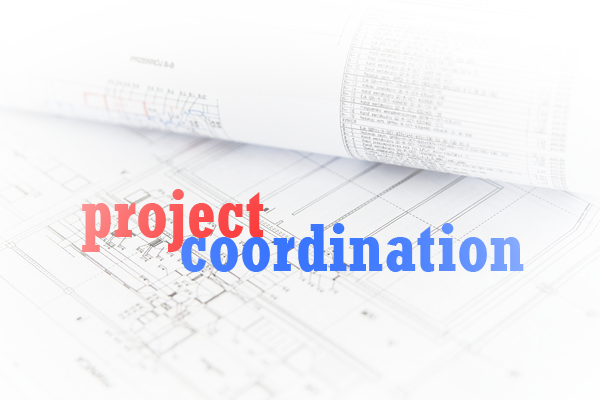There are three major ‘C’ words that a young professional should to have integrated into the workflow early in their career; Communication, Collaboration, and Coordination. Understanding the importance of these three terms early in your career will help your understanding of a project and everyone’s role in the team. Taking the time to focus on coordination, it circles back to the BIM Cause/Effect post, communication, and catching conflicts before a building in under construction. There are pieces of a project that needs to be coordinated at all stages of the project and with different resources and people.
Coordination within the architectural profession goes together with the importance of communication and collaboration. It is important for young professionals to understand the parts and pieces of a project that needs to be coordinated at all stages of the project. By gathering this understanding early in your career will only benefit the projects you work on as well as the firm.
Coordination of the Documents
One of the most important coordination parts of a project is coordinating the drawings with codes, standards, and specifications. This is typically not taught in detail while in college. In studio, a student will learn to coordinate their own views, plans, aesthetics, and graphics. There is a lack of practice with integrating codes, standards, and specifications to a design. This lack of knowledge and practice lends itself to having a big learning curve when one starts their career. Summer internships can be a valuable experience to start chopping away of that learning curve. An internship is a limited amount time and often luck on what the office is working on during that experience.
Drawings and specifications need to be coordinated since they are part of the construction documents package. You should practice with how specifications are coordinated with different elements of the drawings. Staying on a project through construction administration is a great for learning how the drawings and specifications complement each other.
Coordination with Consultants
The architect must be able coordinate within their own office but also with the engineers, owner and user group. For instance, if there is a need from the owner to have a computer lab is it important to have a discussion with the user group on how they use the space. What type of work will be done in space? Are there particular furniture systems would meet their needs better than others? What time of power supply does the furniture and the user group require? Are there other elements within the space that they have specific requirements? Once you have all these answers you can lay out your floor plan to work out the flow, but what about the MEP engineers?

Once you have a layout, sending a coordination model is usually not enough. This can be especially difficult to notice all the changes if they do not attend the user group meeting(s). The architect modifies the floor plan, highlights changes, and makes notes on the client’s needs based on your discussions. All three of those help the engineers translate what they need to design or modify. This can help engineers identify additional question they have that you may not have asked yet.
For instance, some items the electrical engineers need to know what the electrical needs are for each desk, is there a server room, what are the ventilation requirements for the systems in the space, and what type of computers are going into the space. One way to share the information is to send the meeting minutes, but I recommend also sending marked up drawings to send them to help clarify any initial questions and placement. This is a form of coordination and understanding what other parties need to be able to do their job successfully.
Coordination in Construction
Now you are under construction, the coordination does not stop but now there is an additional party, the contractor. The architect is responsible for working with the contractor throughout construction. Construction is great experience to gain understanding of how the drawing and specifications communicate with each other.
This is where having positive relationships and ability to juggle tasks is important to how the project runs during construction. Being able to have the design team and the construction team working smoothly together is all about communication and coordination. An important role the architect plays in construction is working through the items that require additional coordination, or how items may need to be adjusted due to unforeseen conditions. This process helps a young professional grow on how to improve themselves for the next project.
The goal is to have a well-coordinated project before it a project hits bidding. This helps reduce requests for information (RFI’s) and ultimately change orders that effect a project’s budget. Making building adjustments during the design phase is less costly than trying to make major moves while under construction. Try to learn from those around you how they are coordinating a project. Do they have weekly team meetings? Are there weekly model uploads? Do they send out a narrative of changes to the engineers so they understand what has changed in a model upload? Do they send a list of requirements with a space to the engineers? Are the engineers invited to meetings with the owner?
Don’t be afraid to ask for help on getting the team organized. The sooner you can discover your own process for working through coordination of a project during all phases of design, and construction the more it will benefit you as a professional and your design teams.
Written by Katelyn Rossier

